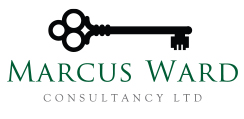Is output tax due on goods that, for various reasons, cannot be sold, or are sold at a discount?
HMRC says that the VAT treatment depends on whether or not there was actually a supply of goods, what happened to them, who was responsible for them at the time and whether a VAT invoice was issued. The value of any supply will also need to recognise any credit given to the customer.
So, as often is the case with the tax, the answer is: “It depends”. So, let’s look at the categories to find out:
Lost goods
This depends on who lost the goods.
Sometimes a business will sell goods to a customer, but they did not receive them because they went astray. This could happen, for example, if goods are lost in the post.
- customer is responsible for loss
If the customer is responsible for any losses before the goods are delivered, then VAT is due on the full amount of the sale.
- supplier responsible for loss
If the supplier is responsible for any losses before the goods are delivered, then the way VAT is dealt with will depend on whether an invoice has been issued.
If an invoice has been issued, output tax is due on the amount invoiced, less the value of any credit given to the customer. So, if credit has been given a full refund, no VAT will be due.
If no invoice has been issued, there is no VAT due. This is because nothing has been supplied. It is prudent to make a note in the business records that the goods were lost an no invoice was raised.
Stolen goods
If goods are stolen from a business’ premises no VAT is due – as long as any customer has not been invoiced. HMRC are very likely to examine such circumstances as it is sometimes used as an ‘excuse’ for underdeclarations. Consequently, we always advise businesses to hold as much evidence as possible to support a claim that theft has taken place.
Goods stolen from a supplier’s premises after they have been sold to a customer- If the contract with the customer means that they are responsible for the goods while they are on the supplier’s premises – there has been a supply and output tax is due.
If the customer is not responsible for the goods when they are stolen, then if:
- a VAT invoice issued – VAT is due on the amount invoiced (but subject to subsequent amendment to the quantum)
- no invoice has been issued – there is no VAT due because there is no supply
NB: If cash is stolen from a business, this does not reduce the value of output tax on any supply.
Fraud
If goods are lost due to fraud it can be difficult to demonstrate or evidence. To avoid paying output tax on goods lost to a fraud a business is required to:
- report the incident to the police
- contact HMRC and give them the case details – this will entail providing a crime or case reference number given by the police. HMRC will consider each case and advise appropriately
Damaged goods
Damaged goods may be sold on at a discounted price, or they might have some scrap value. Output tax is due on whatever income is received for the goods sold. If an insurer makes a payment in respect of the damage, no VAT is due on this income.
Destroyed goods
If goods are destroyed such that they cannot be sold, and these are handed over (or what is left of them) to the insurer, no VAT is due on the disposal. Furthermore, there is no output tax due on any money received from the insurer. HMRC will need to see evidence of the insurance claim, and details of any insurance payment, on their next inspection of the business.
Records
Maintaining meticulous records is crucial for VAT compliance and it is very likely that such issues will be examined closely on HMRC inspections. This is because unexpected reductions in output tax will usually trigger enquiries. Input tax claims for the original purchase of the goods will be unaffected, so any mark-up type exercise will flag up the discrepancy.
More on illegal activities here.
